

Thomas Simpson (1816 - 16 March 1880) was an English architect based in Nottingham. [1]


Thomas Simpson (1816 - 16 March 1880) was an English architect based in Nottingham. [1]
He married Charlotte Lovett (1819-1848) in the Wesleyan Chapel, Melton Mowbray and they had the following children:
He married Rebecca Goodacre (1820-1899) on 17 April 1849 in St Paul’s Church, Nottingham and they had the following child:
He represented St Mary’s Ward on the Nottingham Town Council, and later the Trent Ward. He died at his house in Baker Street, Nottingham on 16 March 1880. [2]
Richard Charles Sutton was an architect based in Nottingham. He was born 1834 and died on 18 October 1915.

St Peter's Church, Radford is a parish church in the Church of England in Radford, Nottingham. Address: 171 Hartley Rd, Nottingham NG7 3DW, UK.

Charles Lloyd was a pipe organ builder based in Nottingham who flourished between 1859 and 1908.
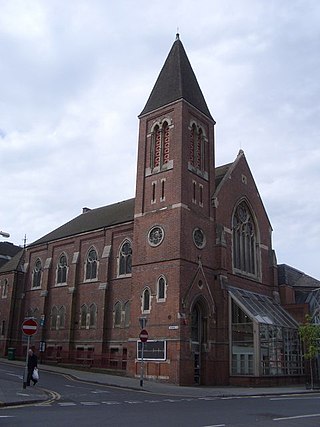
Parliament Street Methodist Church is a Methodist church on Parliament Street in Nottingham.
William Herbert Higginbottom JP was an architect based in Nottingham.
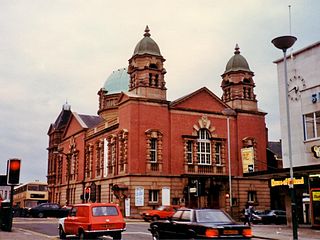
Arthur George Marshall ARIBA was an architect based in Nottingham from 1881.

Abraham Harrison Goodall LRIBA was a British architect based in Nottingham.

John Collyer was an architect based in Nottingham.
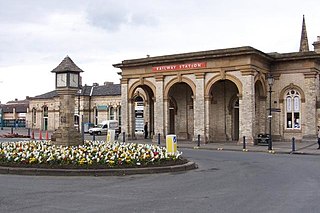
William Peachey was a British architect known for his work for the North Eastern Railway.

George Woodhouse was an English architect who practised from offices in Bolton, and Oldham, then in the county of Lancashire. He collaborated with William Hill on the designs for Bolton Town Hall.

William James Morley FRIBA was an English architect who practised from offices in Bolton, Greater Manchester and Bradford, West Yorkshire.

William Knight was an English architect based in Nottingham.
Alfred Hill Thompson, ARIBA was an English architect in the Gothic Revival and Arts and Crafts styles, who specialised in small schools and chapels in the Yorkshire area. In partnership with Isaac Thomas Shutt he co-designed the Church of All Saints, Harlow Hill, completed in 1871.
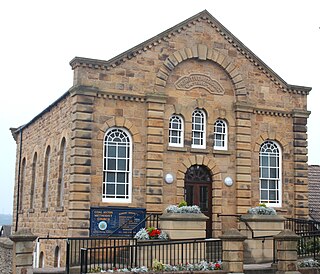
James Kerridge was a British architect based in Wisbech, Cambridgeshire.
Rev. James Young Simpson was a Wesleyan Methodist minister in South Australia, born in Scotland, a nephew and namesake of James Young Simpson, the celebrated pioneer of chloroform as an anaesthetic.

Churchill Methodist Church, in the village of Churchill, North Somerset, is a Grade II listed Methodist church on the Somerset Mendip Methodist Circuit. Designed by Foster & Wood, Bristol, of Perpendicular Gothic style, the church opened on 2 May 1881. The schoolroom and coach house, of Elizabethan architecture, were erected before the new church, and opened on 1 June 1879 (Whitsun). Sidney Hill, a wealthy local businessman and benefactor, erected the church and schoolroom as a memorial to his wife.

Lieut-Colonel Herbert Walker FRIBA, M Inst CE, FSI, was an architect, surveyor and civil engineer based in Nottingham from 1870 to 1923.
Tennyson Street Methodist Church was a Methodist church at the junction of Tennyson Street and Larkdale Street, Nottingham from 1874 until 1941.
Elijah Hoole was an English architect of Methodist churches, settlement halls and social housing. In relation to the social housing, he worked closely with the social reformer Octavia Hill for over 40 years.
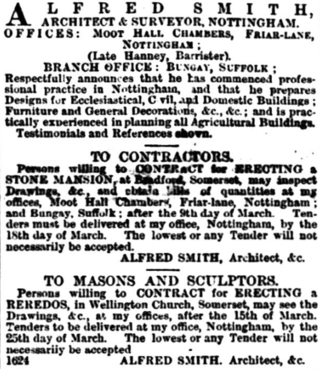
Alfred Smith was an architect who worked in a variety of locations in England, including Nottingham and the Forest of Dean.